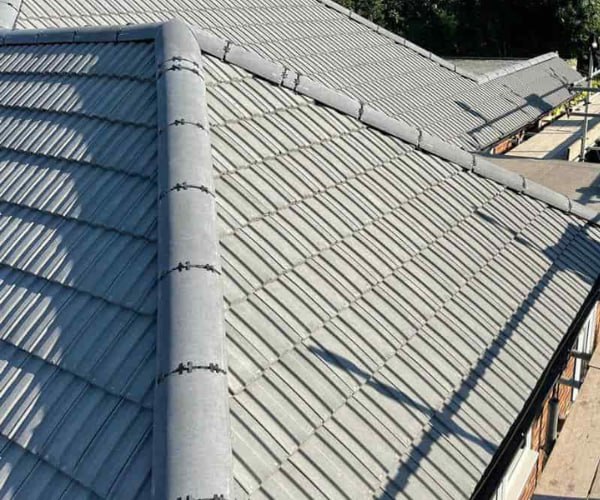How Hip Roofs Improve Ventilation and Energy Efficiency
Introduction
When selecting a roofing design for a property, most people consider aesthetics, structure, and cost—but energy efficiency and ventilation should be just as important. One roof style that offers significant advantages in both areas is the hip roof. Popular in a variety of architectural styles across the UK, hip roofs are not only visually appealing but also functionally superior in several key ways.
At BN Roofing Letchworth Garden City, we’ve installed and maintained numerous hip roofs across Letchworth Garden City, Hertfordshire. This blog explores how this type of roof design contributes to better ventilation, improved energy efficiency, and overall building performance.
What Is a Hip Roof?
A hip roof is a type of roof where all sides slope downwards to the walls, usually at a consistent angle. Unlike gable roofs that have vertical sides, a hip roof forms a compact, pyramid-like shape, which helps it remain stable in high winds and provides an ideal structure for insulation and airflow management.
Characteristics of a Hip Roof
- Four sloping sides, all meeting at the top ridge or a single point
- No vertical ends (gable walls)
- Eaves around all sides of the property
- Can be constructed in a variety of styles, including square, rectangular, and irregular layouts
How Hip Roofs Improve Ventilation
Encourages Consistent Airflow
Hip roofs, due to their uniform slope and overhanging eaves, naturally promote air circulation. When combined with ridge vents, soffit vents, and breathable membranes, they allow hot air to rise and escape while drawing in cooler air from below.
- Reduces heat build-up in the loft or attic
- Helps regulate indoor temperatures in summer
- Minimises the risk of moisture accumulation and condensation
Supports Roofline Vent Systems
The extended eaves on all four sides of a hip roof make it easier to install soffit vents around the perimeter. These vents draw in cool air at the base of the roof, which then rises and exits through ridge or top vents.
- Ideal for cross-ventilation
- Promotes passive airflow without mechanical systems
- Helps prevent timber rot and mould caused by damp air
Suitable for Mechanical Ventilation Additions
If required, hip roofs can accommodate mechanical fans or solar-powered roof vents to enhance airflow, especially in larger or more enclosed roof spaces.
The Energy Efficiency Benefits of Hip Roofs
Improved Insulation Coverage
The enclosed design of a hip roof allows insulation materials to be installed more evenly and securely. With fewer gaps and exposed areas, heat loss is significantly reduced.
- Maximises loft insulation efficiency
- Reduces heating demand in colder months
- Helps maintain consistent indoor comfort levels
Lower Cooling Costs in Summer
With better airflow and the ability to release trapped heat, hip roofs help maintain a cooler internal environment during the warmer months—particularly beneficial for homes in sun-exposed areas of Letchworth Garden City.
- Reduces reliance on electric fans or air conditioning
- Protects interior furnishings from heat damage
- Contributes to overall household energy savings
Solar Panel Compatibility
Hip roofs offer multiple angled surfaces that can be used to mount solar panels efficiently. Although there’s less continuous roof space than a gable roof, strategic positioning allows homeowners to take advantage of solar energy.
- Multiple slopes can capture sun throughout the day
- A well-ventilated roof supports panel performance
- Ideal for energy-efficient home upgrades
Added Structural and Environmental Advantages
Wind and Weather Resistance
The aerodynamic shape of a hip roof provides excellent stability during strong winds or storms, reducing the likelihood of structural damage.
- Distributes wind force evenly
- Suitable for exposed locations in Hertfordshire
- Lower risk of roof tile displacement or uplift
Supports Rainwater Management
Hip roofs are ideal for effective rainwater run-off. With slopes on all sides, water drains efficiently into guttering systems, reducing the risk of pooling or leaks.
- Protects fascias, soffits, and walls from water damage
- Enhances lifespan of roofline components
- Easy to integrate with modern guttering and water collection systems
Why Choose a Hip Roof from BN Roofing Letchworth Garden City?
At BN Roofing Letchworth Garden City, we bring years of roofing expertise to every project, offering tailored advice on roof design, insulation, and ventilation strategies. Whether you’re planning a new build or replacing an existing roof, we ensure your hip roof is constructed using high-quality materials and techniques suited to the local climate and building requirements.
We handle everything from initial design and planning through to professional installation, with a strong focus on energy efficiency, long-term performance, and visual appeal.
Conclusion
Hip roofs offer more than just architectural elegance—they bring practical advantages that enhance energy efficiency and support effective ventilation. From reducing heat build-up in summer to improving insulation coverage in winter, the design of a hip roof helps create a healthier, more comfortable, and more sustainable home environment.
If you’re considering a hip roof installation in Letchworth Garden City, Hertfordshire, speak to the team at BN Roofing Letchworth Garden City. We’ll guide you through the options and deliver a roofing solution that’s built to perform and made to last.
Call us on: 01462 411 099
Click here to find out more about BN Roofing Letchworth Garden City
Click here to complete our contact form and see how we can help with your roofing needs.

